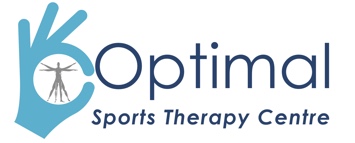This website uses cookies so that we can provide you with the best user experience possible. Cookie information is stored in your browser and performs functions such as recognising you when you return to our website and helping our team to understand which sections of the website you find most interesting and useful. Please see our Privacy Policy.

Returning to Sporting Activities
This last year has brought an unprecedented upheaval to everyone’s lives. Not ONE single person can claim that they have been unaffected by the pandemic.
A couple of serious consequences of this has been the effects on everyone’s health and wellbeing with the closure of leisure facilities and cessation of sports at the grassroots levels. But with some light at the end of the tunnel, most of us will be looking to the future and putting a line through the last year.
Fitness is one of life’s unfair rules. You can spend months working hard, feeling like the large rock that you are pushing up the hill is hardly moving, all for small gains or changes to your fitness but lose most of that within just a few weeks through injury or illness…….the rock rolling back down the hill. Before you go throwing yourself back into training, here are some recommendations to consider with regards to fitness and ensuring in your desperation to get back underway that you do not end up on the treatment table.
Just how fit are you?
With the gyms and leisure facilities only recently opening again following a third lockdown, the first question that you should be asking yourself is how much your fitness suffered over the last year and particularly the last six months. If you train regularly, had you been able to get back to your levels pre-first lockdown and before entering the second lockdown. If you do not do regular fitness work, how does your current fitness level compare to your last regular sessions?
Even allowing for doing some fitness work at home or outside, unless you have been able to load your body in similar fashion to your gym workouts, then your fitness levels and in particular your strength levels would have suffered and will be down. Doing press-up’s instead of bench/chest press, or bodyweight squats instead of weighted squats or leg press, whilst working the muscles in the same way, has no loading similarities.
So before jumping back into training, here are a few considerations to avoid unnecessary injuries.
Flexibility – have you maintained a good level of flexibility throughout the lockdowns? Key areas to consider are hamstrings and lower back, particularly for running and movement-based activities. For kicking within sports or activities, the hip abductors (groin) and hip flexors whilst also looking at ankle and foot flexibility/stiffness. For female athletes, look at general hip mobility and tightness in the ITB band.
Strength – as mentioned above, substituting a weights program with bodyweight exercises will only have served to maintain strength levels to a certain degree so do not expect to start lifting the same weights where you left off or smashing PB’s anytime soon. When you get back in the gym, take a few sessions to establish where you are and do repeat sessions to monitor recovery. If you have a 10% or greater drop-off in the weights in the repeat sessions, then your body is not recovering and has not re-adapted yet to training. This is likely to be the case with most of us who have been deprived the use of weight training equipment.
Personal recommendation is to focus on all-over body conditioning for a few weeks before attempting split sessions as the body will respond better when treated as a “whole” rather than entertaining complex training plans. Included within this should be a good level of flexibility and recovery exercises. You should view the first 6-8 weeks as what as strength coaches we call a “preparation” (or “prep-phase”) phase to your training. To use an old cliché, “Don’t try to run before you can walk”.
Returning to team sports – this is the hardest one to gauge as until you play a competitive game again, you cannot fully measure where you stand with your fitness. Starting point should be performing regular pre-game/training warm-up routines and gauging your recovery over the next 24-48hrs. Unless you have been regularly practising during the lockdown, then sprinting and Change Of Direction (C.O.D) running should be kept BELOW maximum levels and built up gradually over the first few weeks to avoid hamstring or abductor (groin) injuries. For footballers, using the “FIFA 11+” program is a good tool to have as a reference. The body will also need a few weeks to readjust to the “contact” element within your sport, more so for rugby, so learning to deal with “knocks and bangs” will be part of the return to play element.
These are just a few recommendations and will vary on an individual basis but for further help and advice with injury or training issues then please contact Seb or myself through the Optimal website. Both gym and field-based training assessments can now be booked by emailing or calling Seb at Optimal.
Chris Smith MSc. CSCS
Sports & Exercise Rehab Specialist/S&C Specialist (Optimal Sports Therapy)

